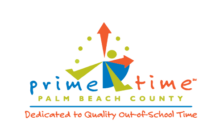9:00 am - 10:30 am
Over the last 5 years, Prime Time has helped the JASE program become a successful afterschool program in Martin County. We are thankful for the variety of trainings offered, yearly actions plans and multiple site visits.
Afterschool ProfessionalMartin County Parks and Recreation
Homework Help I – VIRTUAL
This training focuses on making homework help time effective by helping youth get organized, by providing an atmosphere that helps youth focus on their work and by building a supportive relationship with youth. These elements will help you to reconsider a time to help with homework as an opportunity to build relationships and nurture growth, beyond merely getting the work done.
Upon successful completion of this training, the participant will earn 1.5 clock hours (.2 CEUs) of training.
Training Objectives
Participants will:
- Describe the homework cycle and name potential supports.
- Develop strategies to make homework help time productive.
- Compare homework tracking systems and design a homework space.
Core Knowledge, Skills and Competencies Addressed (CKSCs):
Learning Environments and Curriculum
Physical Environment and Activities
Apply – A. Scaffolds learning experiences and engages children and youth with clear objectives that meet individual needs, interests, and developmental levels.
Apply – C. Employs schedules, routines, and structured transitions.
Apply – F. Uses various culturally responsive practices, tools, and accommodations – including individualization and differentiation — to meet individual needs and enhance learning.
Physical, Social/Emotional, and Cognitive Development
Identify – C. Identifies aspects of a developmentally and culturally responsive environment and learning plan.
Apply – A. Pays attention to and interacts with children and youth.
Apply – B. Implements strategies to develop young people’s self-awareness, social awareness, self-management, relationship building, and responsibility.
Apply – D. Incorporates activities promoting cognitive, social, emotional, and physical development.
Apply – E. Is responsive and encourages learning through questions, active listening, problem-solving activities, and conversations.
Apply – I. Uses contextualized teaching strategies to provide children and youth multiple entry points to an activity based on their current knowledge and abilities.
Language and Communication Development
Apply – A. Uses and models active listening.
Apply – C. Encourages children and youth to communicate in a variety of ways.
Relationships and Interaction with Children/Youth
Individual Child/Youth Guidance
Identify – B. Is aware of factors that may impact behavior.
Identify – D. Identifies individual child/youth abilities and corresponding positive guidance techniques.
Apply – D. Practices positive, healthy interactions and guides children and youth in self-awareness, social awareness, relationship building, and responsible decision making.
Primary QIS Scales Addressed:
I. Safe Environment
I-E. Creating Safe Spaces
II. Supportive Environment
II-H. Scaffolding Learning
II-I. Fostering Growth Mindset
III. Interactive Environment
III-M. Promoting Responsibility and Leadership
IV. Engaging Environment
IV-O. Furthering Learning
IV-Q. Planning

